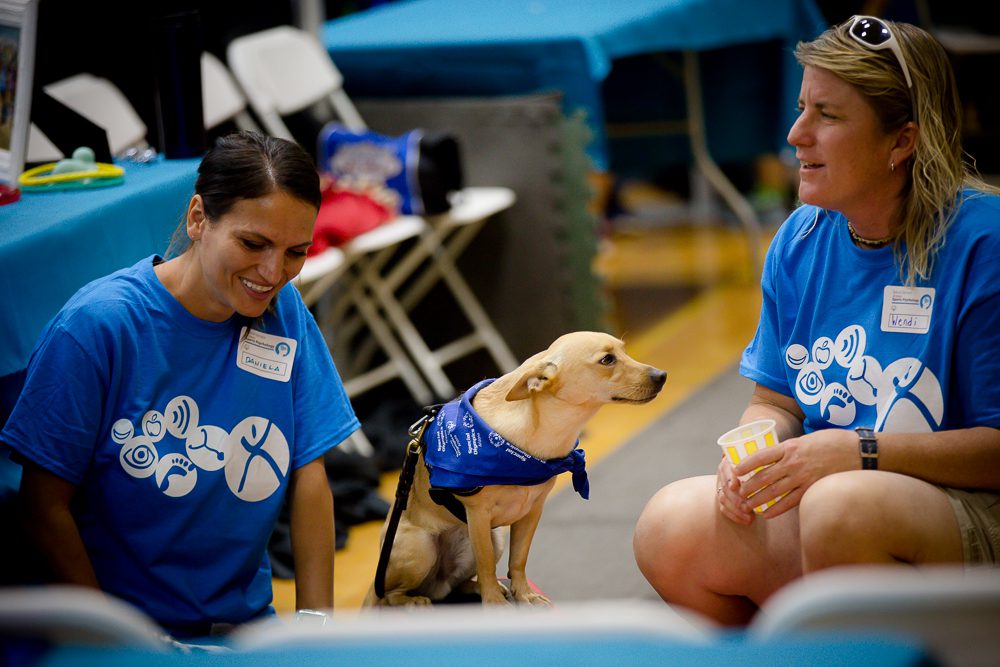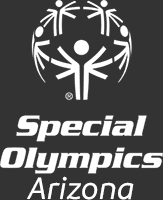
Signs & Symptoms of Down Syndrome
Signs & Symptoms of Down Syndrome
Down syndrome is a common and recognizable chromosomal condition that affects around 5,100 babies born in the United States each year. Individuals who are born with Down syndrome often have recognizable physical, cognitive, and behavioral symptoms, although despite the similarities in symptoms among individuals with Down syndrome, these individuals will all have differing abilities. Down syndrome is caused by an extra chromosome, either partial or full, on chromosome 21. This extra chromosome changes how the body and brain develop in an individual with Down syndrome, resulting in common symptoms. The Special Olympics Arizona team is breaking down these common Down syndrome signs and symptoms, as well as associated conditions and disorders.
What Are the Symptoms of Down Syndrome?
Individuals with Down syndrome will generally have physical, cognitive, and behavioral signs and symptoms that may be apparent from a young age and become more evident as the child ages. Not all individuals with Down syndrome will have every sign and symptom, but many are shared among individuals with an extra chromosome 21. The severity of the symptoms will vary from individual to individual.
Physical Signs
Physical signs of Down syndrome are often present when your child is born, and some may become more noticeable as a child ages. Physical development is often slower in individuals with Down syndrome than in other children of the same age. Due to poor muscle tone, individuals with Down syndrome may be slower to sit up, roll over, and walk. While it may take longer to reach physical milestones than their peers, individuals with Down syndrome are generally capable of reaching those milestones with assistance and guidance over time.
Some of the most common physical signs of Down syndrome include:
- A flattened facial profile, including a flat nose bridge.
- Slanted eyes that tend to point upward, often with a skin fold that comes out from the upper eyelid and covers the inner corner of the eye.
- White spots on the colored part of the eye, commonly referred to as Brushfield spots.
- A shorter than average neck, which may have excessive skin located at the back of the neck.
- Small ears, and small but wide hands and feet.
- A deep groove between the first and second toes.
- Weak muscle tone at birth, which causes difficulty with sitting up and grasping hands and feet.
- Small pinky fingers that tend to point inward towards the thumb.
- Palmar crease, which is a singular crease in the middle of the palm.
- Shorter than average height.
Cognitive Symptoms
Individuals with an extra chromosome 21 may also have cognitive and developmental problems, which will result in intellectual and developmental disabilities. Developmental milestones may differ for individuals with and without Down syndrome. Cognitive symptoms may include:
- Motor skills: A delay in the time it takes your child to walk and move, or a difficulty with their gross and fine motor skills compared to other children of the same age.
- Language skills: A delay in the time it takes your child to speak and their ability to develop their language skills.
- Learning disabilities: It is common for children with Down syndrome to have developmental delays and intellectual disabilities, including difficulty learning and understanding things children of the same age are able to understand.
- Different ways of playing: Children with Down syndrome may play and interact differently with their peers, and they may display differing social and emotional skills when compared to children of a similar age.
As a result of some cognitive symptoms, it may take longer for children with Down syndrome to complete tasks and meet milestones. Things like speaking their first words, toilet training, and eating food independently may come later than they do for children of the same age.
Behavioral Symptoms
Children with Down syndrome may exhibit some behavioral symptoms and difficulties that are worth noting. Behavioral symptoms among children with Down syndrome are often the result of communication difficulties and an inability to express themselves to parents or caregivers. Common behavioral symptoms among children include:
- Stubbornness and tantrums.
- Short attention span and difficulty paying attention in general.
- Obsessive or compulsive behaviors.
- Impulsive behaviors and poor judgment.
As children age and start reaching milestones in their development and communication, behavioral difficulties often lessen, and they are able to more appropriately express themselves. However, difficulties with obsessive behaviors and a short attention span may be persistent difficulties that individuals will learn to cope with.
Associated Conditions and Disorders
Many individuals with Down syndrome may be at greater risk for other associated conditions and disorders. Some of these conditions may be present at birth, while others can develop over time. Not all individuals with Down syndrome will have these associated conditions, but some of the more common ones include:
- Heart problems: About 50% of children born with Down syndrome are born with some type of congenital heart defect. These heart problems may be life threatening and could require surgery in early infancy.
- Abnormalities with the thyroid gland.
- Gastrointestinal problems: GI abnormalities occur in many individuals with Down syndrome and may include abnormalities within the intestines, esophagus, trachea, and anus. Individuals may be at higher risk of developing GI issues such as Celiac disease, constipation, or gastroesophageal reflux.
- Obesity: Individuals with Down syndrome are at a greater risk of becoming obese when compared to the larger population.
- Sleep apnea: Due to the soft tissue and skeletal differences leading to the airways, it is common for individuals with Down syndrome to have obstruction of the airways, which increases the risk of sleep apnea.
- Dementia: Individuals with Down syndrome are at an increased risk for developing dementia and often develop it earlier in life, with symptoms beginning around age 50. Individuals with dementia have an increased risk of developing Alzheimer’s disease as well.
- Other health problems: Individuals with Down syndrome may be at greater risk for developing other health problems, including endocrine problems, seizures, dental problems, hearing and vision problems, and ear infections.



